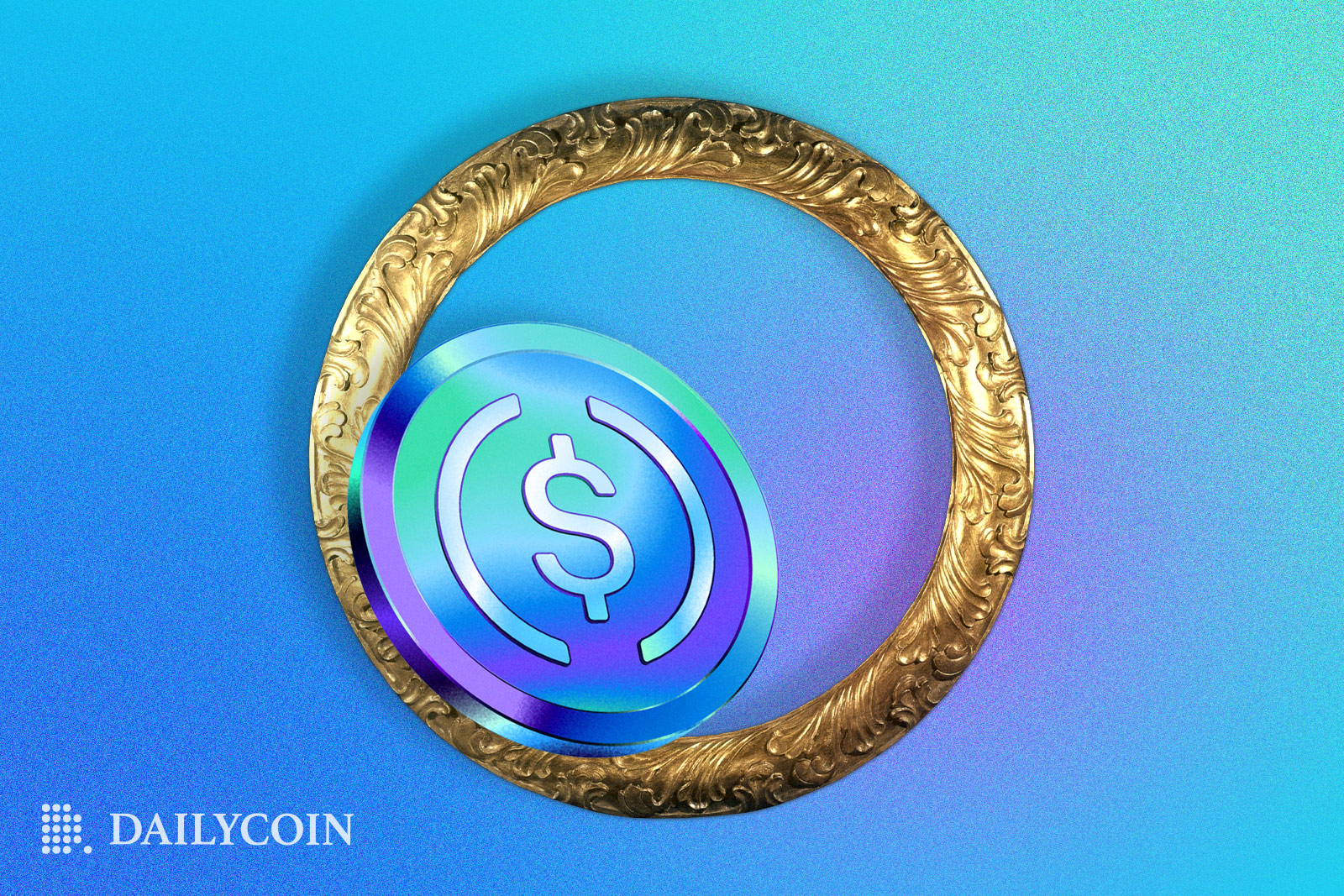
The USD Coin (USDC) is a stablecoin asset that is pegged to the U.S. dollar. This means that the coin will always correlate with the dollar, and one USDC will always be exchangeable for one dollar.
Like many stablecoins, the goal of the USDC is to edge against the price uncertainty in the crypto market.
Even though USDC stands for United States Dollar Coin, the coin isn’t backed by the US government. It’s a private asset that is pegged to the dollar through market means, not the United States government.
What is a Stablecoin?
A stablecoin is a type of cryptocurrency whose value is pegged or tied to an external mechanism. Most cryptocurrencies are controlled by the demand and supply forces of the market, but stablecoins are made to be resistant to those powers.
Sponsored
Stablecoins were created as an alternative to the high volatility that is present in the crypto market. Stablecoins are usually pegged to a currency and will always have a stable worth. Hence, people can be reasonably certain that they have a stable store of value that can be used in transactions.
Bitcoin, or similar currencies, do not have a stable value. That means they may fluctuate wildly in value within a matter of hours. This makes them thoroughly unsuitable for finance or exchange.
The USDC Stablecoin
The USDC is a kind of stablecoin managed by a consortium called Center. Center created the USDC token back in 2018 when it ventured into the world of cryptocurrencies.
Sponsored
Center itself is a consortium that was created to “provide the governance and standards for the future digital financial ecosystem.” The consortium created the USDC because it wanted a token that could be used by the entire ecosystem to conduct operations in fiat, without actually using fiat.
Center argues that the only way that the crypto ecosystem can achieve true financial interoperability is by creating a price-stable means of value exchange. The USDC serves this function perfectly.
The USDC token was created to be an open-source blockchain solution that makes it easier for value exchange across different blockchains. As crypto adoption grows, so will the tokenization of goods and services. As that happens, blockchains with smart contract capabilities will not just be stores of information. They will also be digital markets. The USDC is a token that could be used to exchange value across these chains.
Center, Circle, and Coinbase
While Center is the organization with the sole authority of issuing USDC, the consortium does not wholly own the coin. Center isn’t even independent.
The entire consortium is the brainchild of Circle and Coinbase. So, what are these two entities and why did they co-found Center?
Circle is a global financial technology firm whose mission is to transform the way money moves. Correspondingly, the firm is broadly a Web3 currency issuer. The goal of Circle is to make money more accessible, inclusive, and efficient, and right now the way they do this is by being a currency solution provider in Web3.
Coinbase, on the other hand, is an online platform for buying and selling crypto. In other words, it’s an exchange. With the fall of FTX, Coinbase is the second biggest exchange in the world, and it’s also probably the most regulated. Since the company is domiciled in the US, it is intensely regulated by the SEC and other such agencies.
In 2018, these two companies came together to create the Center consortium, and that consortium created the USDC stablecoin.
What Backs USDC?
A stablecoin is only as important as what makes it stable. Stablecoins could be pegged to all manner of things, but if they aren’t backed properly they could de-peg and rapidly be worth nothing. That’s precisely what happened to the TerraUSD when it became worthless.
The USDC is backed, or pegged, to the value of the American dollar. Ideally, the USDC would be backed by 1:1 dollar fiat reserves. That means that for every USDC on the market, there’s a dollar in the USDC reserve.
In such a situation, if everyone who owns USDC today decides to sell their tokens they would be able to receive their dollar worth without issues. That’s what it means to be backed by the US dollar.
However, the ideal isn’t always the reality. People expect the USDC to be backed by fiat at all times, but it’s not. In 2021, Circle, one of the founders of Center, announced that only 61% of the token’s value is backed by cash and cash equivalents.
The other 39% or so was backed by a mixture of commercial paper accounts, treasuries, and Certificates of Deposit. But that shouldn’t scare investors. These other items that back the USDC are valuable financial instruments. They will therefore be able to carry the USDC through times of intense fiat demand.
In fact, at the time they made the announcement, the S&P Global Ratings regarded the organization with a rating of S/T A1. S&P is one of the big three credit agencies and their rating is the closest you can get to the truth on Wall Street. The fact that S&P gave Circle an A1 rating means that it’s more than likely they can meet their financial obligations.
How Does USDC Stay Pegged?
The strategy for the USDC to stay pegged is simple. There’s always one dollar for every USDC out there on the market. For example, if someone wanted to buy USDC using a Circle app they would have to use actual fiat. Once they buy the USDC and pay the fiat to Circle a new token is minted, backed by the price paid for it.
The reason why people trust the USDC to continue being pegged to the dollar is that it’s a fiat stablecoin. The last stablecoin to crash in the market was the TetherUSD, and a lot of the complaints people had about it stemmed from the fact the coin was algorithmic. It didn’t have fiat reserves and instead trusted a convoluted system of demand and supply to keep the coin pegged to the dollar. Of course, that algorithm eventually failed spectacularly.
The USDC is nothing like that and is instead pegged to a real currency that can be exchanged for the asset at any given time.
On the Flipside
- While one can reasonably expect USDC to remain backed by fiat assets, the leadership in crypto has recently been less than upfront about their operations. Hence, trust in USDC cannot be absolute.
- Stablecoins aren’t always 1:1. Sometimes they can fall as low as 0.94-0.99:1.
Why You Should Care
At this point, USDC is almost like a native coin in the cryptoverse. It’s important to know what it is, how it works, and why people trust it. That will tell you whether to use it in your own transactions or not.
